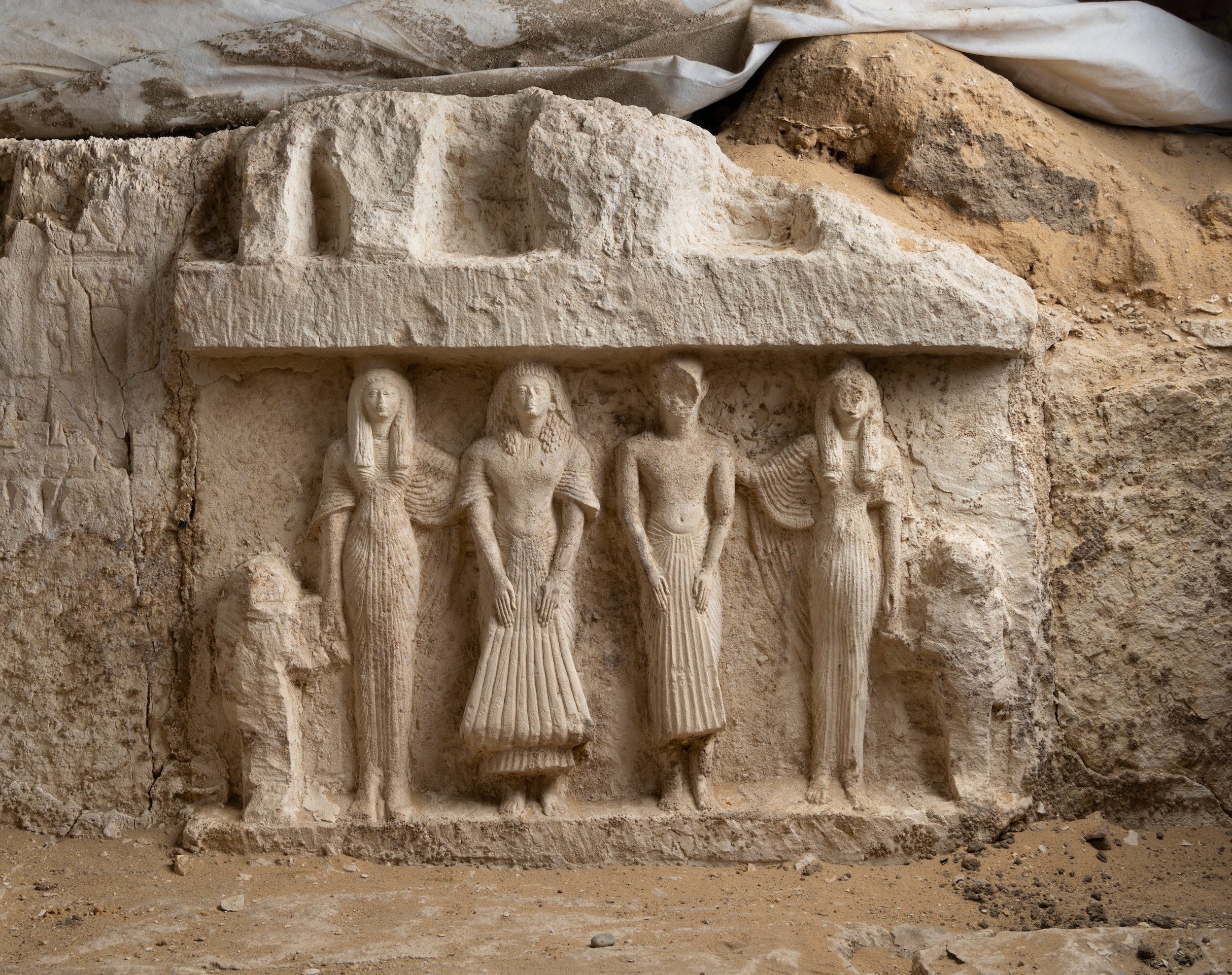
A team of Dutch and Italian archaeologists working alongside Egypt’s Supreme Council of Antiquities have uncovered a 3,200-year-old underground tomb complex in Saqqara.
The complex belonged to Panehsy, a steward of the temple of Amun during the reign of Pharaoh Ramses II c. 1250. It is composed of a freestanding temple, complete with an entrance, a colonnaded courtyard, a passage leading to underground burial chambers, and three chapels.
The tomb complex at Saqqara. Photo: Ministry of Tourism and Antiquities.
Inside, archaeologists found images of Panehsy and his wife Baia taking part in religious rituals. In one stone relief, the deceased couple is depicted seated at an offering table across a priest, which hieroglyphic text identifies as Piay, with a leopard skin draped around his shoulders. According to the archaeologists, Piay was likely a subordinate of Panehsy, who was tasked with supervising his burial and death cult.
A relief from the Panehsy chapel in Saqqara. Photo: Ministry of Tourism and Antiquities.
The international team also discovered four period chapels on the east side of the tomb, two of which boast well-preserved wall reliefs depicting a funeral procession and scenes in the afterlife.
The entrance to Panehsy’s tomb complex was initially found in 2019 but the pandemic forced onsite activity to stop until September 2022 with the most recent push coming in February and March of this year.
Egyptian conservator Hassan Soliman of the Supreme Council of Antiquities in the Saqqara archaeological area restoring a relief. Photo: Ministry of Tourism and Antiquities.
The excavation is led by Lara Weiss from the National Museum of Antiquities in Leiden, which has been carrying out excavations in the area since 1975, and Christian Greco, director of the Egyptian Museum in Turin, which houses one of the best collections from ancient Egypt outside of the country.
“It’s very exciting, because we have been excavating in this area for such a long time,” Weiss told the National News. “With every new discovery, we understand better the life of the ancient Egyptians there and how they used the site.”
Reliefs found at a chapel built for maker of gold foil for the pharaoh’s treasury. Photo: Ministry of Tourism and Antiquities.
Beginning around 3000 B.C.E., Saqqara became the chosen burial place for the ancient Egyptian capital of Memphis. It is a short drive south of Cairo and has been a focus of archaeological digs for well over a century. It has unveiled several major discoveries in recent years with archaeologists hoping the site will continue to uncover insights into life in the early dynastic period through to the Greco-Roman period.
“The new discovery sheds new light on the development of Saqqara Necropolis during the Ramesside period,” said Mostafa Waziri, secretary-general of the Supreme Council of Antiquities. “[The excavation] introduces new individuals that were yet unknown in the historical sources.”
More Trending Stories:
Considering a Job in the Art World? Here’s How Much Art Professionals Actually Make for a Living